|
Date
|
Speaker
|
Topic
|
Faculty Host
|
11/22/2013
10:30-12:00
|
Adam Alter
NYU
|
"The Exception is the Rule: Underestimating and Overspending on Exceptional Expenses"
|
|
11/15/2013
10:30-12:00
|
Ken Wilbur
UC San Diego
|
"How TV Ads Trigger Online Shopping"
-
Click to read Abstract
Media multitasking distracts consumers' attention from television advertising, but it also facilitates immediate reactions such as web browsing and purchase. This paper explores how the content of television advertising influences subsequent online shopping. Using a massive dataset spanning $4 billion in advertising expenditures and a quasi-experimental design, a simultaneous equations model is estimated to identify how advertisement content influences brand website traffic and sales, controlling for a host of other factors. The findings show that action-focus ad content increases brands' online traffic but does not directly increase purchase probability. Product information and emotional branding content actually reduces traffic but increases sales among those who visit the brand‘s website. None of the ad content elements directly increase both traffic and sales, implying that brands seeking to attract multitaskers'''' attention must select their advertising copy carefully according to their objectives.
|
|
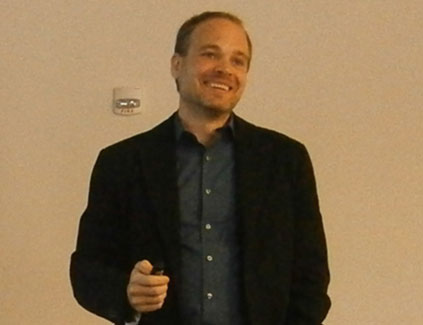
|
11/8/2013
10:30-12:00
|
Lucy Liu
Texas A&M
|
"The Effects of Product Design on Demand and Marketing Effectiveness: An Empirical Study of the Automobile Industry"
-
Click to read Abstract
This research empirically investigates the impact of product design on demand. We adopt a morphing technique to construct two objective measures of product design: segment prototypicality and brand consistency, defined respectively as the degree to which a product resembles the typical design in its product segment and in its brand portfolio. With a unique dataset that consists of 33 brands and 180 car models sold in the U.S. market from 2006 to 2010, we use a random coefficient demand model to test how segment prototypicality and brand consistency affect demand and the effectiveness of marketing activities. We find that demand is affected negatively by segment prototypicality and positively by brand consistency, and that these effects are stronger for luxury products than for economy products. Therefore, it is important for a product to adopt a segment-atypical and yet brand-consistent design, especially in the luxury segment. Furthermore, the two product design features also affect demand indirectly by moderating the effectiveness of marketing activities. These findings offer important insights that can guide firms’ decisions on product design, advertising and pricing. Three counterfactual studies illustrate the potential gains in firms’ profit by leveraging these findings.
|
|
10/25/2013
10:30-12:00
|
Uzma Khan
Stanford
|
"Self-Control in Sequential Behaviors"
|
|
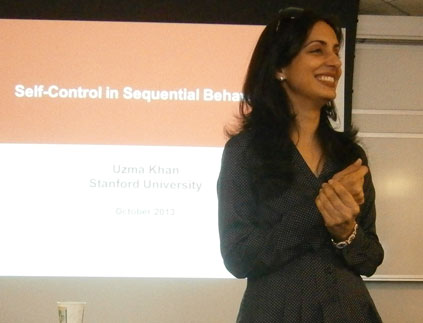
|
10/18/2013
10:30-12:00
|
Andrew Stephen
Pittsburgh
|
"Product Ideation in Social Networks"
-
Click to read Abstract
Marketers increasingly use online product ideation communities whereby consumers suggest ideas for new products (and services) and for improvements to existing products. These communities allow consumers to see others’ ideas and potentially be influenced by them in a social networking environment. This paper examines how the structure of a consumer’s social network of “inspirations” (other consumers) affects their ability to generate innovative ideas. Having many connections (higher degree) affords one with many potential sources of inspiration, which could prove helpful. However, this depends on how interconnected one’s sources of inspiration are (clustering). Across six experiments involving real-time networked product ideation for three different products and where participants are randomly assigned to positions in exogenously determined networks, the authors show that having higher degree only helps one’s ability to generate innovative product ideas when their network neighbors are relatively independent (lower clustering). Higher clustering makes individuals more interdependent, which makes it more likely that their ideas socially converge to a narrowly defined set of concepts, which stifles innovativeness. Clustering also reduces innovativeness by making it easier for mediocre, lower-innovativeness ideas to spread.
|
|
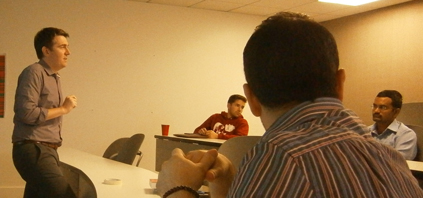
|
10/11/2013
10:30-12:00
|
Catherine Tucker
MIT
|
"Social Advertising"
-
Click to read Abstract
In social advertising, ads are targeted based on underlying social networks and their content is tailored with information that pertains to the social relationship. This paper explores the effectiveness of social advertising using data from field tests of different ads on Facebook. We find evidence that social advertising is effective, and that this efficacy seems to stem mainly from the ability of targeting based on social networks to uncover similarly responsive consumers. However, social advertising is less effective if the advertiser explicitly states they are trying to promote social influence in the text of their ad. This suggests that advertisers must avoid being overt in their attempts to exploit social networks in their advertising.
|
|
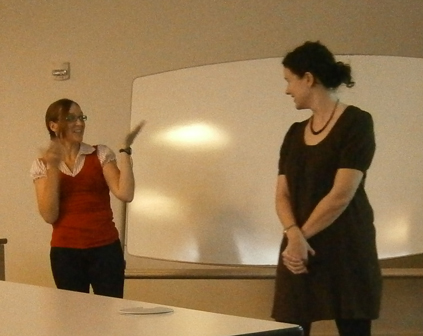
|
9/27/2013
10:30-12:00
|
Sharad Borle
Rice
|
"An Empirical Investigation of Unique Aspects of Retailing in India: The Perspective of Consumer Packaged Goods Manufacturers"
-
Click to read Abstract
India is a large and fast growing emerging market. However, the retail sector in India has some unique aspects that have not yet been fully investigated by marketing scholars. These are: (1) a complex distribution channel characterized by a large number of fragmented traditional ‘mom-and-pop’ type stores and professionally managed chain stores (called ‘Modern Trade Outlets’ or MTOs), (2) government regulation mandating consumer packaged goods (CPG) manufacturers to print on each product’s package its maximum retail price (MRP), which anchors its final retail price, (3) rapid urbanization and the resulting large movement of population across urban and rural areas, and (4) relatively uncommon manufacturer-led consumer promotions.
In order to grow rapidly, many Indian CPG manufacturers focus on large cities, premium-priced products, and MTOs. In this paper, we empirically investigate the impact of distribution channel, MRP, and city size tier on the sales and profitability of a large Indian CPG manufacturer. We analyze whether this strategy of manufacturers is justified. Some of our results show that the Indian CPG manufacturers need to alter their strategy by (1) addressing the needs of traditional retailers, (2) introducing new lower priced products, and (3) focusing on cities of all sizes. The results and implications concerning a one-time manufacturer-led promotion are also discussed.
|
|
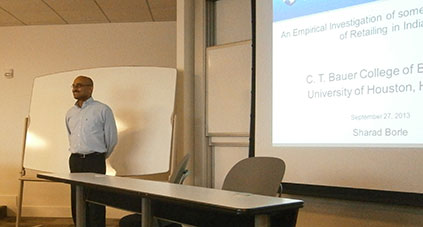
|
9/20/2013
10:30-12:00
|
P.K. Kannan
Maryland
|
"Attribution Modeling: Understanding the Influence of Channels in the Online Purchase Funnel"
-
Click to read Abstract
Online marketers invest significant resources in driving traffic to their websites through multiple marketing interventions and channels. In this paper, the authors propose a conceptual framework to examine the nature of carryover and spillover effects of prior visits through different channels to a firm’s website across a number of commonly used online channels, both at the visit and purchase stages. They develop a three-level measurement model of customers’ consideration of online channels/sources, their visits through these channels over time and subsequent purchase at the website, which accounts for carryover and spillover of visits. Based on customers’ path data of visits and purchases at a travel and hospitality firm’s website, the authors find significant carryover and spillover effects – for example, e-mails and display ads trigger visits through other channels, while e-mail leads to significant purchases through search channels. Attributing credit for the different channels for the purchase conversions using the model estimates, the authors find that the relative contributions of these channels are significantly different as compared to estimates of the widely-used “last-click” attribution model. A field study conducted at the firm’s website by turning off paid search for a week validates the ability of the model in estimating the incremental effect of a channel on conversions.
This study highlights that the commonly used last-click attribution or the averaging attribution models are not good metrics for understanding the real impact of firm-initiated channels as well as customer-initiated channels on conversions. Some of these metrics consider only those visits that result in conversion immediately to the exclusion of the other visits and all of them consider only the visits that result in conversion while excluding the information that can be derived from non-conversions. While they may provide passable results in product categories with very short purchase funnel (with one or two touch points) and with fewer channels, they will invariably be misleading in product/service categories with longer purchase funnels as in high involvement categories – such as consumer durables and travel services – and for firms with multiple channels, both customer-initiated and firm-initiated. In the latter case, the effectiveness of firm-initiated efforts is generally underestimated using the last-click model. In addition, there are limits to the effectiveness of firm-initiated efforts such as e-mail and display retargeting campaigns. Repeated e-mail targeting may actually hurt conversions in certain cases and retailers should be well-advised to carefully calibrate the targeting of customers with these instruments.
|
|
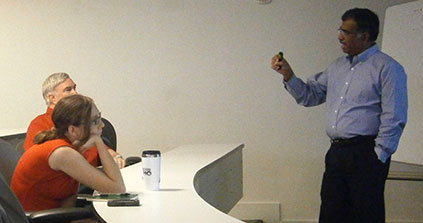
|
4/19/2013
10:30-12:00
|
David Godes
Maryland
|
"Product Policy in Markets with Word-of-Mouth Communication"
-
Click to read Abstract
We investigate the equilibrium relationship between product quality and word-of-mouth communication. Specifically, we ask whether firms should optimally produce “better” products when consumers are more likely to exchange information? On the surface, the answer would seem to be intuitive. Clearly, one might assume, if people are more likely to "find out" about a product, then its quality should be higher. However, in the face of a lack of consistent empirical evidence, we make a theoretical argument that the relationship may be more complicated than it appears. The critical moderating factor in our model is the nature of the communication and what its primary impact is. On one hand, we might assume that the primary impact of word of mouth is to help people to better assess the utility of products with which they are already familiar. If this is the case then, indeed, our model suggests that more word of mouth should lead to higher-quality products. On the other hand, it is well known that another significant effect of word of mouth is to expand awareness of a product. In a model of informative word of mouth - which we define as word of mouth that increases the general awareness level of a product - we show that quality may either increase or decline as word of mouth expands. The answer depends, in part, on the extent to which communications are more likely to occur between consumers of similar taste for quality. Taken together, the two models therefore suggest that the firm''s optimal product-policy response to the growth in social interactions depends on both the content and the structure of the underlying conversations. In addition, our results also make clear to researchers the importance of carefully specifying the nature of the social interactions and of considering the multidimensional effects they may have.
|
|
4/13/2013
UH Hilton
All Day
|
|
The 31st UH Marketing Doctoral Symposium
|
|
4/12/2013
UH Hilton
5:00-7:00
|
|
The 31st UH Marketing Doctoral Symposium.
Keynote speaker: Leonard Lodish, Samuel R. Harrell Professor, Wharton School
|
|
4/5/2013
(10:00-11:30)
|
Olivier Toubia
Columbia
|
"Intrinsic versus Image-Related Utility in Social Media: Why Do People Contribute Content to Twitter?"
-
Click to read Abstract
We empirically study the motivations of users to contribute content to social media in the context of the popular microblogging site Twitter. We focus on non-commercial users who do not benefit financially from their contributions. Previous literature suggests two main sources of utility that may motivate these users to post content: intrinsic utility and image-related utility. We leverage the fact that these two types of utility give rise to different predictions as to whether users should increase their contributions when their number of followers increases. To address the issue that the number of followers is endogenous, we conducted a field experiment in which we exogenously added followers (or follow requests in the case of protected accounts) to a set of users over a period of time, and compared their posting activities to those of a control group. We estimated each treated user''s utility function using a dynamic discrete choice model. While our results are consistent with both types of utility being at play, our model suggests that imagerelated utility is larger for most users. We discuss the implications of our findings for the evolution of Twitter and the type of value firms may derive from such platforms in the future.
|
|
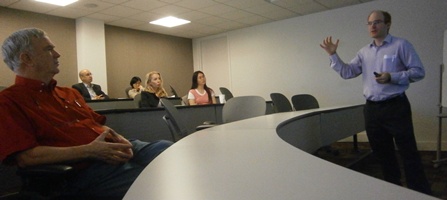
|
3/29/2013
10:30-12:00
|
Thales S. Teixeira
Harvard
|
"Why, When and How Much to Entertain Consumers in Advertisements? A Web-based Facial Tracking Field Study"
-
Click to read Abstract
The presence of positive entertainment (e.g., visual imagery, upbeat music, humor) in TV advertisements can make them more attractive and persuasive. However, little is known about the downsides of using too much entertainment. This research focuses on why, when, and how much to entertain consumers in TV advertisements. We collected data in a large-scale field experiment using 82 ads with various levels of entertainment shown to 275 consumers in their homes and workplaces. Using a novel web-based face tracking system, we continuously measure consumers' smile responses, and viewing interest and purchase intent. A simultaneous Bayesian Hierarchical model is estimated to assess how entertainment affects purchases by endogenizing viewing interest. We find that entertainment has an inverted U-shape relationship with purchase intent. Importantly, we separate entertainment into that which is associated with the brand versus that which is not, and find that the former is directly positively associated with purchase intent while the latter is not.
|
|
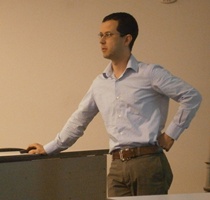
|
3/8/2013
10:30-12:00
|
Andy Gershoff
UT Austin
|
"Feeling Finished and Feeling Smart: How Psychological Closure Affects Abstraction and Subjective Knowledge"
-
Click to read Abstract
I measure the spillover effect of intercollegiate athletics on the quantity and quality of applicants to institutions of higher education in the United States, popularly known as the "Flutie Effect." I treat athletic success as a stock of goodwill that decays over time, similar to that of advertising. A major challenge is that privacy laws prevent us from observing information about the applicant pool. I overcome this challenge by using order statistic distribution to infer applicant quality from information on enrolled students. Using a flexible random coefficients aggregate discrete choice model-which accommodates heterogeneity in preferences for school quality and athletic success-and an extensive set of school fixed effects to control for unobserved quality in athletics and academics, I estimate the impact of athletic success on applicant quality and quantity. Overall, athletic success has a significant long-term goodwill effect on future applications and quality. However, students with lower than average SAT scores tend to have a stronger preference for athletic success, while students with higher SAT scores have a greater preference for academic quality. Furthermore, the decay rate of athletics goodwill is significant only for students with lower SAT scores, suggesting that the goodwill created by intercollegiate athletics resides more extensively with low-ability students than with their high-ability counterparts. But, surprisingly, athletic success impacts applications even among academically stronger students.
|
|
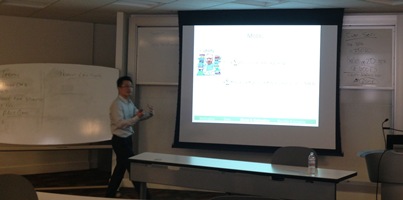
|
3/1/2013
10:30-12:00
|
David Bell
Wharton
|
"Offline Social Learning and Online Retail Trials"
-
Click to read Abstract
Online retailing is the most dynamic part of the retail sector, yet when buying online, consumers often face considerable uncertainty about non-digital product attributes. Firms therefore employ creative and often costly methods such as two-way free shipping and pop-up stores to help consumers resolve this problem of incomplete knowledge. We document another key way this issue is mitigated-specifically, through information transmission in naturally occurring social learning processes. Using consumer trial data from Bonobos.com, the leading US online retailer for men''s fashion apparel, we find that offline social learning about non-digital attributes facilitates online retail trials. Furthermore, using data from the Social Capital Community Benchmark Survey, we show that geographic variation in "neighborhood social capital", the propensity for neighbors to trust each other and communicate with each other in a local neighborhood, moderates the social learning process. In particular, higher levels of social capital reduce inefficiencies in the social learning process. The offline social learning process, and the moderating effect of social capital, both have an economically important impact on new trials. Implications for new trial generation at online retailers are discussed.
|
|

|
2/15/2013
10:30-12:00
|
Wilhelm Hofmann
Chicago
|
"Everyday Temptations: An Experience Sampling Study of Desire, Conflict, and Self-Control"
-
Click to read Abstract
How often and how strongly do people experience desires, to what extent do their desires conflict with other goals, and how often and successfully do people exercise self-control to resist their desires? To investigate desire and attempts to control desire in everyday life, we conducted a large-scale experience sampling study based on a conceptual framework integrating desire strength, conflict, resistance (use of self-control), and behavior enactment. A sample of 205 adults wore beepers for a week. They furnished 7,827 reports of desire episodes and completed personality measures of behavioral inhibition system/behavior activation system (BIS/BAS) sensitivity, trait self-control, perfectionism, and narcissistic entitlement. Results suggest that desires are frequent, variable in intensity, and largely unproblematic. Those urges that do conflict with other goals tend to elicit resistance, with uneven success. Desire strength, conflict, resistance, and self-regulatory success were moderated in multiple ways by personality variables as well as by situational and interpersonal factors such as alcohol consumption, the mere presence of others, and the presence of others who already had enacted the desire in question. Whereas personality generally had a stronger impact on the dimensions of desire that emerged early in its course (desire strength and conflict), situational factors showed relatively more influence on components later in the process (resistance and behavior enactment). In total, these findings offer a novel and detailed perspective on the nature of everyday desires and associated self-regulatory successes and failures.
|
|
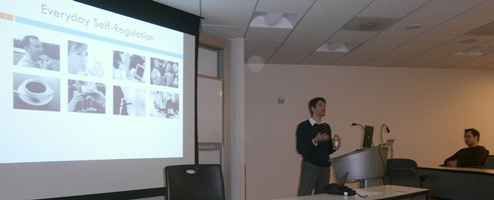
|
2/1/2013
10:30-12:00
|
Vikas Mittal
Rice
|
"When Does Recognition Increase Charitable Behavior? Toward A Moral Identity-Based Model"
-
Click to read Abstract
Each year, individuals in the United States donate over $200 billion to charitable causes. Despite our lack of understanding of whether and how it increases charitable behavior, charities often offer recognition to motivate donor behavior. This research focuses on how the effectiveness of recognition on charitable behavior is dependent on the joint influence of two distinct dimensions of moral identity-internalization and symbolization. Three studies examining both monetary donations and volunteering behavior show recognition increases charitable behavior among those characterized by high moral identity symbolization and low moral identity internalization. Interestingly, those who are high in moral identity internalization are uninfluenced by recognition, regardless of their symbolization. By understanding correlates of the two dimensions of moral identity among donors, nonprofits can strategically recognize potential donors to maximize donation and volunteering behavior.
|
|
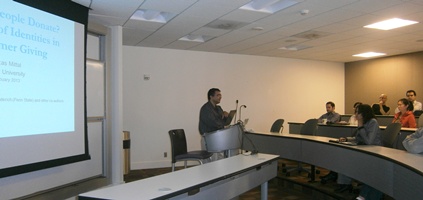
|